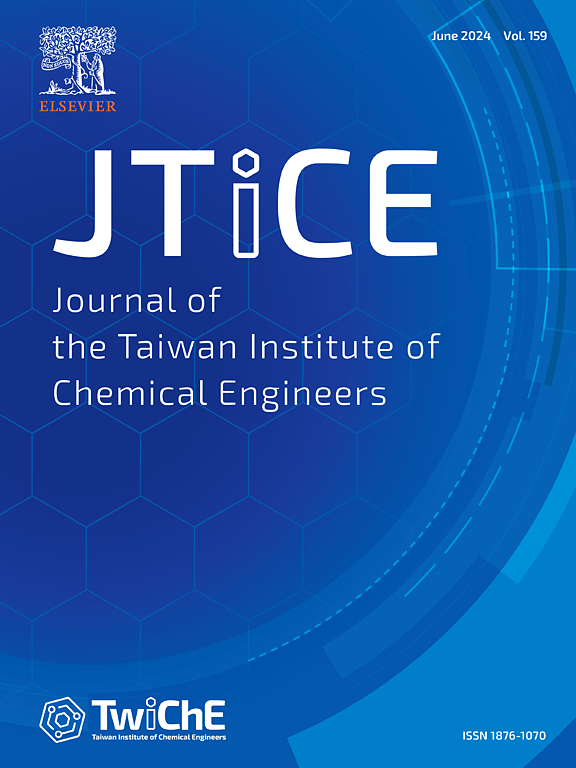Wide-potential, low-temperature supercapacitors enabled by dimethyl sulfoxide-based hybrid deep eutectic solvents
IF 5.5
3区 工程技术
Q1 ENGINEERING, CHEMICAL
Journal of the Taiwan Institute of Chemical Engineers
Pub Date : 2025-04-10
DOI:10.1016/j.jtice.2025.106131
引用次数: 0
Abstract
Background
Deep eutectic solvents (DES) are rapidly gaining attraction as
electrolytes in electrochemical energy storage devices due to their low melting points, enhanced safety, cost-effectiveness, broad electrochemical stability window, high thermal stability, and biodegradability.
Methods
A novel hybrid deep eutectic solvent (DES) electrolyte was formulated by combining dimethyl sulfoxide (DMSO) with LiClO₄. It exhibits versatile tunability through the addition of water and acetonitrile as co-solvents.
Significant findings
This innovative hybrid DES demonstrates superior ionic conductivity, reduced viscosity, and enhanced flame retardancy, enabling the development of a symmetric activated carbon (AC) based supercapacitor (SC) with a stable potential window of 2.2 V. The device achieves an impressive specific capacitance of 46.6 F g⁻¹ at a current density of 1 A g⁻¹, with an energy density of 28.6 Wh kg⁻¹ at a power density of 1020 W kg⁻¹. Additionally, it shows outstanding cyclic stability, retaining 92 % of its capacitance after 20,000 cycles at 5 A g⁻¹, and 86 % retention after a 120-hour floating test. Notably, due to the good anti-freezing capability of the hybrid DES electrolyte, the device maintains high performance even at temperatures as low as -20 °C.

求助全文
约1分钟内获得全文
求助全文
来源期刊
CiteScore
9.10
自引率
14.00%
发文量
362
审稿时长
35 days
期刊介绍:
Journal of the Taiwan Institute of Chemical Engineers (formerly known as Journal of the Chinese Institute of Chemical Engineers) publishes original works, from fundamental principles to practical applications, in the broad field of chemical engineering with special focus on three aspects: Chemical and Biomolecular Science and Technology, Energy and Environmental Science and Technology, and Materials Science and Technology. Authors should choose for their manuscript an appropriate aspect section and a few related classifications when submitting to the journal online.

 求助内容:
求助内容: 应助结果提醒方式:
应助结果提醒方式:


